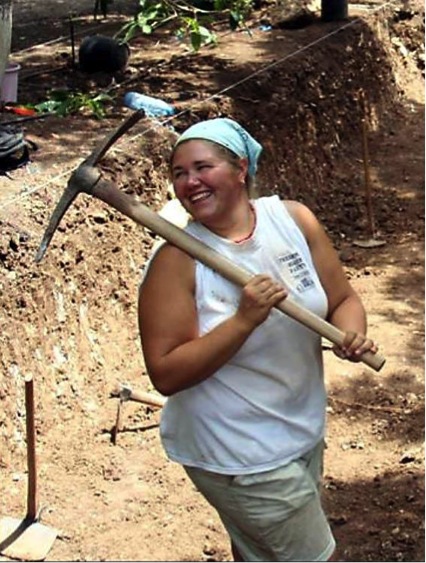
ASOR FELLOWSHIP RECIPIENTS: WHERE ARE THEY NOW?
ALEX RATZLAFF
My 2007 Heritage Fellowship helped fund my work at the Roman Fort at Yotvata, Israel, as a senior staff member. And my 2008 Heritage/Platt Fellowship was used to support my participation as a senior staff member at Tel Kabri, Israel.
What was your most memorable moment during the excavation season you participated in?
Every season in the field is filled with countless memorable experiences. The long days and hard work are always made worthwhile with an amazing discovery, a new understanding of the development of the site, or simply the satisfaction of a having uncovered a lost piece of history.
The easy answer to what my most memorable experience was from my work on these two digs would be to say it was one of the many remarkable discoveries we’ve made: an ostracon at Yotvata, the earliest occupation under the palace at Tel Kabri, etc. But what stands out the most is a moment with one of my student participants at Yotvata in 2007. During the season, this particular student worked hard and was interested but never really felt connected to the significance of what he was doing at the site. In the last week of the dig as I was supervising the excavation of the fort’s postern gate (think back door), I had this same student working on the removal of material around the gate which had several layers of plaster with the faint remains of red paint. After we finished recording all the information regarding the plastered surface; it had been drawn, photographed, measured, described, etc., I asked the student to continue and remove a portion of the plastered section. He looked at me dumbed-founded and said he couldn’t because it had finally dawned on him that a Roman soldier had put that plaster up and now he, almost 1,700 years later, was going to remove it. It took all season but the student finally had the realization that he was directly interacting with the past in a place far removed from his daily life, he had the rare opportunity to be part of a shared history and work first-hand with the physical remains of antiquity.
This moment was more meaningful to me than all of the discoveries we made that season because I remembered when I first had that same realization years earlier and now I playing a part in introducing students to archaeology and how it felt it to interact with the past. While I obviously love excavating and the thrill of discovering something whether an unique artifact or understanding how the site developed, it has become truly rewarding teaching a new group of students each year.
What advice would you give a fellow recipient?
Recipients of these fellowships are given a valuable opportunity to either participate in an archaeological excavation for the first time or to continue their work at sites they have been participated in the past. For new participants I would advise that they take advantage of everything about the experience: meeting new people, really learning about the site and methodology if you plan to make a career of archaeology, don’t be afraid to learn from the people you are working with, have fun, travel around the area when you have time off, and just in general take advantage of everything the experience has to offer. For those returning to sites there isn’t much advice to give – you know what you’re doing just enjoy it, especially the time together with good friends.
Are you still affiliated with ASOR as a member?
Currently I am transitioning from being an student at an Institutional Member, a benefit I always took advantage of as a graduate student at Boston University, to a Professional Member.
What is the current status of your career or education (or other project)?
I recently completed my Ph.D. at Boston University, Department of Archaeology. Following my completion I was awarded a two-year (2013-2015) Post-Doctoral Fulbright Fellowship with an appointment as a Post-Doctoral Research Fellow in the Department of Maritime Civilizations, University of Haifa. My research focuses on the Roman development along the coast of the Western Galilee and the implications for cultural identity, specifically focused on the site of Achziv.
How did the scholarship/grant help you with your career?
The Heritage and Platt Fellowships allowed me to continue working at both Yotvata and Tel Kabri, alleviating some of the financial strain of traveling abroad as a graduate student. My continued participation in these excavations led to authoring chapters in the final and ongoing excavation volumes for both sites. My work at Yotvata directly influenced my dissertation research and my continued work on the Roman army. And I am still a senior staff member at Tel Kabri where we continue to make interesting new discoveries such as the Canaanite wine cellar we uncovered this past season.
